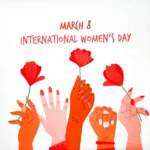Diversity, Advocacy and Inclusion are the main pillars of SCDAI. These terms, although widely popular and trendy, are generally misinterpreted or understood on a superficial level. Through this blog we aim to give you a general understanding of what these terms mean.
What is Inclusion?
Simply put Inclusion is the absence of exclusion!
Exclusion: [Social exclusion] is a process through which individuals or groups are wholly or partially excluded from fully participating in all aspects of life of the society, in which they live, on the grounds of their social identities, such as age, gender, race, ethnicity, religion, culture or language, and/or physical, economic, social disadvantages.
Yet, contrary to popular believe inclusion is not synonymous for equality or equity. The following image illustrates the difference between the three consepts.

In the first image, the game represents society, a society that his been molded to benefit one niche group in society. The wooden fence represents barriers that only enable the privileged to watch. Everyone else is excluded from watching the game. This naturally gives one person able to watch the game a lot of privilege. E.g. They can make informed decisions, others rely on them to tell them about the game, they controls the narrative and etc.
This image represents equality. This is what treating everyone equally in a society molded to benefit some more than others. The goal is for equal opportunities, equal respect and equal worth of individuals and groups. But this can’t be achieved through equal treatment, yet.
The second image represents equity. Equity is taking into account the individual needs and restructuring accordingly. While equity is the best approach in our current society, it isn't sustainable. Underrepresented groups shouldn't have to continously lobby/advocate to participate in spite of the barriers, the barriers shouldn't be there to begin with.
The thrid image represents inclusion. Inclusion is actively removing the barriers of exclusion. Inclusion is completely restructuring the system and removing the barriers that exclude certain individuals and groups from actively participating in society.
What is Diversity?
Diversity is often mixed up with having a "variety". That you have a variety of nationality, races, genders, sexual orientations and etc. present in either your friend group or organization doesn’t automatically mean that you have a diverse friend group or organization. What discerns between whether this variety is discriminated diverse or tokenized is Inclusion.
A discriminated variety
Discrimination is the practice of actively excluding groups and individuals from fully participating in society. Discrimination attaches variables that qualify one or more affinity group as superior than the others. As a result, the needs of the affinity groups assumed as superior are more likely to be met and the needs of the affinity groups and individuals assumed as inferior are neglected or fully disregarded.
A tokenized variety
Tokenism is the practice of making only a perfunctory or symbolic effort to be inclusive. Which means that tokenism and discrimination are basically the same thing, except that with tokenism you pretend like that’s not the case. In our current social climate, organizations and individuals are more likely to opt for tokenism because one the one hand it’s less problematic than monotony or discrimination; but on the other hand it is still cheaper, easier and more comfortable than diversity.
One of the most obvious examples of this is when institutions use a lot of images with a variety of people of color for their online presence or to promote their brand as “diverse”, but then there are no actual POC's working there. While this is a very obvious example, tokenism can happen in a very subtle way. Tokenism happens every time that we claim that we are welcoming of differences, yet we don't accommodate to the different needs.
A diverse variety
Diversity describes the state of actively including individuals from a variety of [social] groups. Diversity is not about having one black kid, one hijabi girl and one kid with a disability in a picture. It is ensuring that environments are welcoming, accommodating and accessible to all groups and individuals.
Diversity is actively working towards removing barriers to enable groups and individuals to fully participate in all aspects of society.
The truly challenging aspect of being diverse is understanding in order to be diverse we need special attention for underrepresented groups. We have never truly been in an inclusive society, meaning that equality is not the way to go when everything has been molded to fit one niche group of people. So in order to be diverse (aka. Inclusive of all the differences) you need an equitable approach.
What is Advocacy?
Advocacy is often thought of as “an act of publicly representing an individual, organization, or idea” and used as an umbrella term for many intervention tools. It can include active lobbying, including methods such as letter writing, meeting politicians, running public forums, questions in parliament, participating in various consultative processes.
In order to advocate for others, it is important to know what type of advocacy you want to do and how to advocate in an effective manner. Advocacy comes in many different situations and in many ways you may already be an advocate.
1. Self-advocacy
Most of us are self-advocates. You are a self-advocate every time you speak up for yourself or others. It could be in the form of telling your friend that they hurt your feelings or more simply, asking for correct change at the supermarket.
2. Individual Advocacy
Another type of advocacy is individual advocacy, this refers to supporting someone when they need help or trying to find a solution when someone has a problem. E.g., helping people experiencing homelessness, helping animals in need, recycling clothes or stuff to help others etc..
3. Community Advocacy
A third type of advocacy is community advocacy. It’s an amplified version of individual advocacy, but community advocacy involves groups of people acting to bring about positive change.
Think of local non-profit organizations or certain volunteer groups. Certain examples are greenpeace, AIESEC, GFN, Diversity talks and also yours truly SCDAI.
4. Political / Systems Advocacy
Lastly, we have political or systems advocacy. This relates to having an interest in politics and policy, making a difference. The goal of systems advocacy is to change policy, rules, or laws on a particular issue. This can happen at the local, national or international level. Both individuals and organizations engage in systems advocacy.



